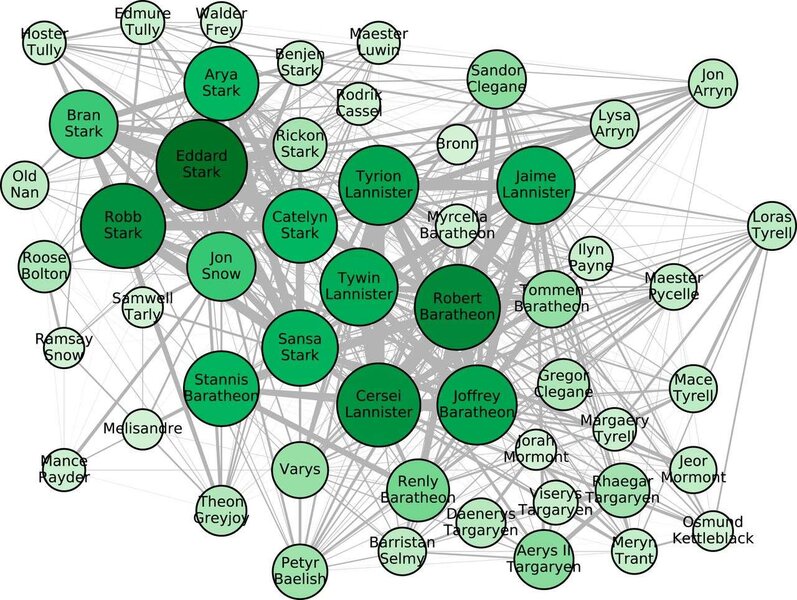Create a free profile to get unlimited access to exclusive videos, sweepstakes, and more!
Study suggests Game of Thrones books are engaging because they mimic real life (well, minus the dragons)

Fans of George R.R. Martin’s A Song of Ice and Fire series (aka the books on which HBO’s Game of Thrones is based) now have science to support why the happenings in Westeros are so engaging. A new study in the Proceedings of the National Academy of Sciences of the United States of America (PNAS) delves into this very issue.
The paper is on the technical side (read all the details, including a swath of scientific-looking formulas here, if you’re so inclined), but the conclusion from the study is that part of why so many people find A Song of Ice and Fire books so engaging is because, despite over 2,000 characters appearing in the books, the number of social interactions between characters mirrors that of real life. Furthermore, Martin manipulates the timeline in the books to make major events (Red Wedding, anyone?) come up at unexpected times for maximum “WTF just happened?!” moments.
How did the researchers figure this out? Very carefully. The study states that the characters’ connections to each other were “extracted manually from Ice and Fire by carefully reading the text and noting interactions between characters.” That means that someone had to go through the thousands of pages in the five Ice and Fire books (to date) line-by-line to make those character connections. After what must have been hundreds of hours of work, the research team was able to produce a mapping of the series’ social network:
As the article points out, even characters like Eddard Stark and Robert Baratheon who kick the bucket early still have a substantial impact on other characters in the books.
Those deaths, however, have an obvious impact on the narrative of the series and how characters subsequently do (or don’t) interact with each other. The timing of events is relevant here, and the researchers turned, like many of us do, to Reddit to get answers, specifically to a user named PrivateMajor, who likely put in hundreds of hours of their own time to compile an approximate timeline of events from the books.
The PNAS study then used the Reddit resource to compare how deaths were revealed in the books with the "objective" event timeline provided by Reddit. What did they find? That the killing off of major characters often occurred in clumps in the Reddit-created Westerosi timeline, but that, chapter-by-chapter in the books, the time between deaths are spread out to traumatize us even more by coming up unexpectedly in the narrative.
The researchers also found that the more randomly-spaced deaths kept the number of characters interacting with each other at a manageable level. “If the story is allowed to become too complex, there is a threat of the average reader becoming cognitively overwhelmed and the story becoming chaotic and unfathomable,” the study concludes. “Ice and Fire avoids this; although more than 2,000 characters appear, readers and TV audiences alike remain avidly engaged. The findings reported here suggest that this is facilitated by clever structuring such that each chapter is told by different POV characters, endowed with social networks containing only around 150 individuals.”
So there you have it — Westeros is just like our world in terms of the characters’ social networks. We also now have scientific proof that George R. R. Martin is pretty good at messing with our heads and keeping us engaged in a multi-thousand-page story. There’s a reason why so many of us are eagerly waiting for Winds of Winter to be finished, after all. And now we have the science to help explain why.















